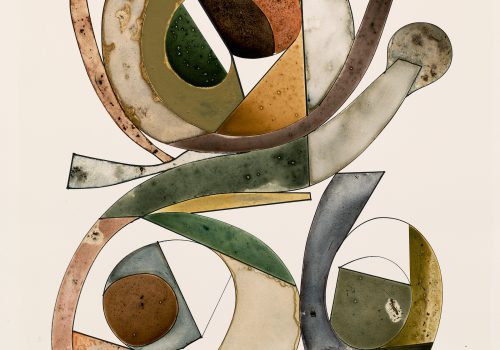As a young man, after graduating from the Philadelphia Museum School of Industrial Art in 1938, Irving Penn harbored dreams of becoming a painter. In 1941–42, he spent a year in Mexico painting, but he found his results to be disappointing and destroyed all but a small group of drawings. Despite this repudiation, drawing continued to play an important role for Penn in his subsequent work as a photographer as he worked out an image and its composition.
Following his retrospective exhibition at The Museum of Modern Art in 1984, Penn returned to painting after more than forty years. He developed unique working methods, inspired by his experiences printing photographs in platinum and palladium metals. In the period between 1986 and 2000, he photographed drawings to convert them into the underlying structure for paintings. By reproducing the drawings as platinum-palladium prints, he enlarged their scale and emphasized the graphic quality of their lines. Penn then used the resulting print as a matrix, painting over it using combinations of watercolor, ink, dry pigments, and gum arabic.
After 2000, when Penn ceased platinum-palladium printing, he began making inkjet prints from digitally scanned drawings. He also produced freehand paintings using no photographic or printing processes. Examples of all these methods are reproduced in the catalog.
Alexandra Dennett
















